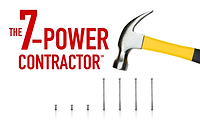Al Levi: The goal writing is on the wall
Setting goals is easy; it’s the follow through that is hard.

By the time you read this, most people’s New Year’s resolutions or goals will be a distant memory, and they’ll be back to doing the same things they said they weren’t going to do. Maybe you even have a few yourself. Here’s the thing: Setting goals is easy; it’s the follow through on the plan of action that will create the change you want that’s the tough part. A famous author once said, “A goal without a plan is just a wish.”
That said, there’s a process for energizing goals properly, and the first step is to put the goal (or goals) in writing. This may sound obvious, but you’d be surprised at how much push back I’ve gotten on this one over the years. The reason is because if you never put the goal in writing, you don’t have to be wrong or miss. You can always be perfect in your mind because there’s nothing tangible to remind you of what you said you wanted. You don’t have to confront failure or any of the other negative messages in your head that say you didn’t deserve it anyway.
Here’s the thing: A goal is just a destination. The plan you create to get to your goal is your map or GPS. That’s it. You will inevitably learn new things along the way and that may cause you to adjust the goal or the plan to get it. Even if you fall short, you’ll almost certainly be better off than if you hadn’t tried. As I told one client who was stressing over this, “There’s no ‘goal police.’” The sole purpose of a goal is to give you something tangible to shoot for.
Once you’ve written down your goal, you need to do some work to make sure it’s real and tangible. So, let’s say your goal is, “I want to have $10 million in sales this year.” That’s a big goal, and that’s great. How are you going to do that? Let’s say each truck is doing $250,000 in sales per year. So, to make the math easy, four trucks is $1 million in annual sales. That just means you need 40 trucks rolling every day next year to get to $10 million. That’s when the goal becomes real!
The better you describe the goal, meaning with numbers and clear pictures, the better chance you’re going to stay with it to get there and stay there.
Aligning personal and professional goals
But wait a minute, is growing the business to 40 trucks, which is a business goal, really in alignment with your personal goals? If you’re at a $1 million a year in sales today and you want to be $10 million a year from now, what are you willing to sacrifice personally, to go from $1 million to $10 million?
I’ve asked people that, and some people said, “I’d love to be $10 million next year, but I don’t want it to interrupt my surfing lessons or my yoga classes. And I have to be home at 5 p.m. every day for my kids.”
Now, there’s nothing wrong with that, but if that’s the case to be aligned, maybe the goal needs to be more like $2 million, and that might be a stretch.
Here’s an example from my own life as a contractor. Before we had operating manuals in at my family’s business, vacations were a nightmare. My beeper was going off constantly and my big mobile phone never stopped ringing. In fact, not a day went by without some kind of SOS from the office or the field staff, and I was really tired of it.
I told my wife, “I’m going to be around less often, which I know you’re asking yourself, ‘How can you be around even less?’ But if you give me two years to work on putting a lot of procedures in place that will fix this craziness, we will be able to go on vacation without being interrupted and we can get our lives back.”
And here’s the great news for my wife and myself — we got there. I made the decision to sacrifice some short-term personal freedom to create enduring freedom down the road.
I hope this inspires you too.
Cutting to the chase
The point is, if you are going to have a big ambitious goal, it has to somehow match with your personal goals, or one will negate the other, and the personal goals (either consciously or subconsciously) will likely win out. That’s why you want to write both types of goals out and look at them next to each other. It’s a vital reality check.
So, let’s say your business and personal goals are in line, and you think you think you can get to 40 trucks. The next step is to figure out what the next 30 most important actions you need to take this year to get there. These actions take two forms — projects and habits will comprise your “Top 30” list. From there, you want to whittle the Top 30 list down to five projects (Top 5) based on the projects or habits that will remove the biggest obstacles and/or create the explosive growth you need to get to 40 trucks.
Once you’ve identified these five projects, no matter how crazy your week, month or quarter is, you promise to spend at least two hours working on one or more of those projects. This is called “working on the business instead of in it,” which Michael Gerber talks about in his book, “The E-Myth.” I call it working on the right things, at the right time, in the right way.
To stay on top of all of this, I suggest you add into your schedule what I call a “Meeting with Me.” This is a 30-minute meeting that happens at the same time every week (I do mine on Sundays), where I review all my goals and projects and check to see if I’m still on track. Looking at your list of goals and top projects weekly keeps them top of mind and allows you to make minor course corrections along the way.
One client, a former football player, described it this way: “Can you imagine playing the three quarters of the game without ever knowing the score only to discover in the last five minutes of the fourth quarter you’re down 21 points?” Checking in weekly to make sure you’re moving forward consistently is essential to your longer-term success.
If you’ve already set business goals for the coming year, great, but don’t stop there. Write them down and then acid test them against your personal goals. Right size them if need be, and then commit to paper the top five projects or habits you’re going to start working on today. Then, review your goals and projects every week and watch them blossom into reality.
Looking for a reprint of this article?
From high-res PDFs to custom plaques, order your copy today!









